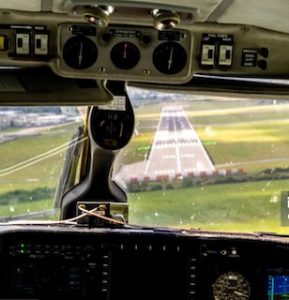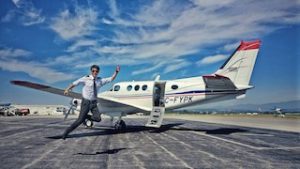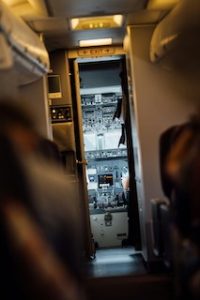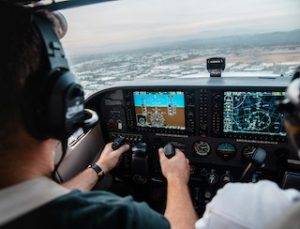Benefits And Features Of A Flight Simulator
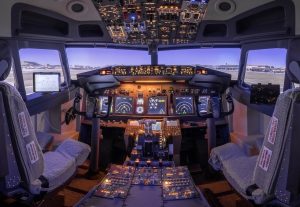 Airplane simulators have revolutionized both aviation training and recreational flying experiences. These advanced software platforms offer a highly realistic experience of piloting an aircraft, bridging the gap between theoretical knowledge and practical application. Whether you’re a budding pilot, a seasoned aviator, or simply an aviation enthusiast, understanding the benefits and features of airplane simulators can greatly enhance your flying journey.
Airplane simulators have revolutionized both aviation training and recreational flying experiences. These advanced software platforms offer a highly realistic experience of piloting an aircraft, bridging the gap between theoretical knowledge and practical application. Whether you’re a budding pilot, a seasoned aviator, or simply an aviation enthusiast, understanding the benefits and features of airplane simulators can greatly enhance your flying journey.
What is an airplane simulator?
An airplane simulator is a sophisticated software program or hardware system designed to replicate the experience of flying an aircraft. These simulators are used for various purposes, including pilot training, aircraft design, and entertainment. They create a virtual environment where users can experience flight dynamics, control systems, and navigation procedures in a controlled setting.
Airplane simulators range from basic desktop applications to highly complex setups with full-motion systems and high-definition visuals. They integrate detailed models of aircraft systems and flight physics to deliver a realistic experience. With advancements in technology, modern simulators offer unprecedented levels of accuracy and immersion.
Benefits of airplane simulators
1) Enhanced pilot training
The primary application of airplane simulators is in pilot training. These simulators provide a safe and controlled environment where pilots can practice flying skills without the risks associated with real-world flying. Trainees can experience various flight scenarios, including adverse weather conditions, system malfunctions, and emergency procedures.
Simulators offer significant cost savings compared to actual flight hours. They allow for repetitive training exercises and instant feedback, helping pilots improve their skills efficiently. Furthermore, simulators are invaluable for familiarizing trainees with the cockpit layout and avionics of different aircraft models.
2) Cost-effective learning
For hobbyists and enthusiasts, airplane simulators offer an affordable way to experience the thrill of flying. High-quality simulators are available for home use, providing a realistic flying experience without the expense of owning or renting a real aircraft. These simulators often come with a variety of aircraft models and scenarios, allowing users to explore different types of flying and aviation environments.
3) Experimentation and exploration
Airplane simulators allow users to experiment with various flight conditions and scenarios that may be impractical or impossible to recreate in real life. Pilots can test new maneuvers, explore challenging weather patterns, or practice emergency procedures. This flexibility is invaluable for both training and recreational purposes, as it encourages exploration and learning.
4) Improving flight skills
Even experienced pilots can benefit from using airplane simulators. Regular use of a simulator can help maintain and refine flying skills, keeping pilots sharp and prepared for real-world flying. Simulators can also be used to practice specific procedures or techniques, such as instrument approaches or navigation skills, which can enhance overall proficiency.
Features to look for in an airplane simulator
1) Realistic flight dynamics
A crucial feature of any high-quality airplane simulator is realistic flight dynamics. This includes accurate representations of aircraft handling, aerodynamics, and response to controls. The more realistic the flight dynamics, the more valuable the simulator is for training and skill development.
2) Detailed aircraft models
For an immersive experience, simulators should offer detailed models of various aircraft. This includes accurate cockpit layouts, instrument panels, and avionics systems. High-quality simulators provide detailed visual and functional representations of different aircraft types, allowing users to familiarise themselves with various aircraft designs.
3) Advanced graphics and visuals
Modern airplane simulators use advanced graphics to create visually stunning and realistic environments. This includes high-resolution landscapes, accurate weather effects, and detailed airport layouts. High-quality visuals enhance the immersive experience and contribute to the overall realism of the simulation.
4) Comprehensive navigation and avionics systems
Effective navigation and avionics systems are essential for a realistic flying experience. Simulators should include detailed representations of GPS systems, radar, autopilot functions, and communication tools. This feature allows users to practice navigation and flight management skills in a simulated environment.
5) User-friendly interface
A user-friendly interface is crucial for both novice and experienced users. The simulator should offer intuitive controls and easy access to various features and settings. A well-designed interface enhances the overall experience and ensures that users can focus on flying rather than struggling with complex controls.
6) Multiplayer and online features
Many modern airplane simulators include multiplayer and online features, allowing users to fly with others in real-time. This feature adds a social dimension to the simulation, enabling users to collaborate, compete, or simply share their flying experiences with others.
Choosing the right airplane simulator
When selecting an airplane simulator, it’s important to consider your specific needs and preferences. Here are some factors to keep in mind:
- Purpose of use: Determine whether the simulator will be used primarily for training, recreational flying, or a combination of both. For professional training, you might require a simulator with advanced features and realistic flight dynamics. For recreational purposes, a more basic simulator with user-friendly features might be sufficient.
- Budget: Airplane simulators vary widely in price, from affordable desktop versions to high-end systems with full-motion capabilities. Consider your budget and how much you’re willing to invest in the simulator. Keep in mind that higher-priced simulators often offer more advanced features and greater realism.
- System requirements: Ensure that your computer or hardware setup meets the system requirements of the simulator. High-quality simulators often require powerful processors, ample memory, and advanced graphics cards. Check the specifications and ensure compatibility before purchasing.
- Reviews and recommendations: Research and read reviews from other users to gauge the performance and quality of the simulator. Look for recommendations from aviation professionals or enthusiasts to find a simulator that meets your expectations and requirements.
- Support and updates: Consider the level of support and updates provided by the simulator developer. Regular updates can enhance the simulator’s functionality and address any issues or bugs. A responsive support team can also assist with any technical problems or questions you may have.
Future of airplane simulators
As technology continues to advance, the future of airplane simulators looks promising. Innovations in virtual reality (VR) and augmented reality (AR) are expected to further enhance the realism and immersion of flight simulations. VR headsets and motion platforms will provide even more lifelike experiences, allowing users to feel as though they are truly in the cockpit of an aircraft.
Artificial intelligence (AI) is also set to play a significant role in the evolution of airplane simulators. AI-powered systems can offer personalised training experiences, adaptive challenges, and intelligent feedback, making simulations more effective and engaging.
Endless choices with airplane simulators
Airplane simulators have become an indispensable tool in the world of aviation, offering a range of benefits for both professional pilots and enthusiasts. With their realistic flight dynamics, detailed aircraft models, and advanced features, these simulators provide a valuable platform for training, exploration, and recreation. By understanding the key features and considerations, you can select the right simulator to meet your needs and enjoy the thrill of flying from the comfort of your home.
As technology continues to evolve, airplane simulators will undoubtedly become even more advanced and immersive, offering new possibilities for both learning and enjoyment. Whether you are training for a career in aviation or simply indulging in a lifelong passion, the world of airplane simulators offers endless opportunities for exploration and discovery.

